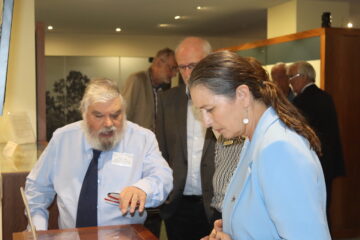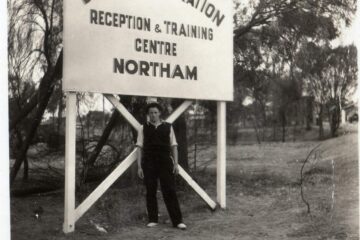The following information is abstracted from an interview with Robert Caporn (Ian) . Conducted by the UNSW Australians at War Film Archive in Canberra
In this interview Ian also talks (briefly) about the Dutch and based on that information I have abstracted the following article.
Paul Budde
Dynamics and Attitudes: Australian Perspectives on the Dutch in World War II
During World War II, interactions between Australian troops and the Dutch were limited, primarily observed within specific military contexts. One such encounter was recalled by Ian, reminiscing about his time at Kirkston in Brisbane, where Dutch personnel, predominantly from the Netherlands East Indies (NEI), were stationed. However, beyond this interaction, personal engagement with the Dutch was minimal, akin to their experiences with American forces.

When questioned about the Australian perception of Dutch soldiers, he expressed indifference, indicating a lack of significant interaction or opinion. However, personal sentiments and historical context shed light on nuanced perspectives. The issue of Dutch colonialism and mistreatment of indigenous populations, particularly in the NEI, coloured some Australian views suggest a degree of resentment towards the Dutch for their treatment of colonised peoples, notably the Javanese, whose disillusionment with Dutch rule led to complex dynamics during the Japanese occupation.
Recollections from his father who also served in the military during WWII. In Ian’s words:
My father’s bit (about racism and the Dutch) was the only bit that I knew about, I didn’t strike it. But the Dutch – when at Timor – the Australians in Timor were being taken out my father was a special commanding officer of military (CO of M) – he went across to Broome by Mitchell bomber and flew over to Broome from Brisbane to brief the pilot of a Dutch Catalina aircraft which was to go in and land an NEI Major in East Timor. And the NEI Major who was an Indonesian he was to bring the Australians – guide the Australians down to the coast and I think it was there were two American submarines were on their way from Fremantle up there to pick them up off the coast and the operation was all in full swing. And the Sub were on their way and my father, he told me that he went across to Broome to brief the Dutch Flight Lieutenant, or the Lieutenant bloke who was flying the Catalina and he said he walked into the briefing and took the NEI Major who was the one he was going to take in and the Dutchman took one look at the NEI Major and said, “I’m not taking a nigger and sticking my neck out for him, I’m going home.” And he said he walked out of the room in Broome went straight down the Catalina and took off and flew it back to Cairns.
In a separate conversation off-camera, the veteran provided insights into the geographical challenges and strategic considerations regarding Dutch-controlled territories. Discussing the remote location of Merauke, a Dutch settlement in New Guinea, Despite the fact that both Australians and Dutch soldiers operated here they hardly ever met. Ian mentioned why that was the case The logistical difficulties of reaching Merauke from their position north of the Fly River meant traversing treacherous terrain and navigating the formidable Fly River, this posed significant challenges, with estimates of a month and a half to two months for a potential evacuation route. This sobering assessment underscores the rugged realities of wartime deployments and the strategic imperatives guiding Allied operations in the region.
Later after the Japanese surrender, the decision to divert Australian troops from Java to Borneo, as recounted by Ian underscores the strategic considerations and geopolitical complexities that shaped Allied operations in the Pacific theatre. This strategic manoeuvre, while influenced by military objectives, also reflects the broader geopolitical dynamics and colonial legacies that defined Australia’s wartime engagements in the region.


